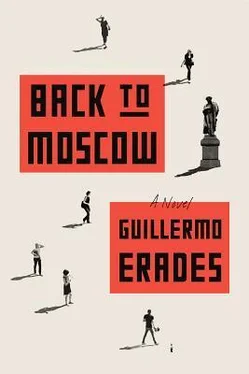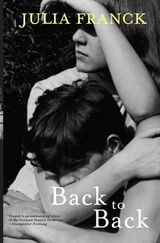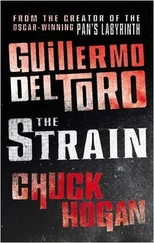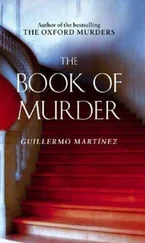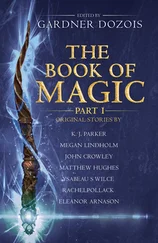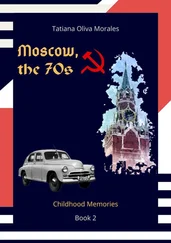I walk along the naberezhnaya and cross under the Bolshoy Kammeny Bridge, and on my left across the river I see the House on the Embankment, with its giant Mercedes-Benz logo, and I’m thinking that Tatyana can give me calm and security, but she can’t reach as deep into me as Lena. Lena hurts. And I wonder if perhaps it’s precisely the pain I’m attracted to, and pain is what people search for when they say they want love. Pain is what keeps us awake, what makes us feel alive. We need pain as a reference point, to recognise and measure happiness. Why, otherwise, would we choose to chase only those who can hurt us?
The depository of human contradictions, of the eternal struggle between God and evil.
After the cathedral was destroyed, Sergey said, a grandiose project started to take shape, the construction of the Palace of the Soviets, which, Stalin hoped, would be the tallest building in the world. According to plans, the palace was to be crowned by a giant statue of Lenin, his arm raised to the sky, pointing at the horizon towards a better future. Construction of the palace began in the mid-1930s — the riverbank was dug, the foundations were laid for what was to be a monument to the workers’ paradise.
I know I can’t stop thinking about Lena because she’s no longer within my reach. I want the Lena of my first days in Moscow — not Boarhouse Lena, but Propaganda Lena — and suddenly it occurs to me that maybe back then she was already a whore. I want a Lena who no longer exists. I want a Lena who perhaps never existed.
The Palace of the Soviets was not meant to be. When Russia was attacked, this time by Hitler, construction had to stop. It never resumed. There were technical problems, the site kept flooding, and superstitious Muscovites believed it was a divine punishment for having destroyed the cathedral in the first place. For many years, the site of what was intended to be the tallest building in the world, the ultimate monument to the working class, was nothing more than an empty construction site, a monument to abandoned dreams.
It was in the late 1950s, under Khrushchev, that the site was turned into an immense swimming pool, the biggest open-air pool in the world. Muscovites loved the swimming pool, especially in summer months, Sergey had told me, and now I wish the site had remained a pool — a man-made lake, perfectly round, as I had seen in photos — in which I could take a dip and refresh my body, relieve my headache, purify my soul, but I’m heading not towards a public swimming pool but an enormous cathedral with a golden dome, because, after the perestroika, the mayor of Moscow and the Patriarch of all Russians decided to rebuild Christ the Saviour exactly as it had been before the soviet demolition.
The cathedral was newly completed when I arrived in town, so, as I walk towards the golden dome with my bouquet of yellow roses I think, we have this in common, we’re both newcomers to Moscow, Christ the Saviour and me, and it’s a bizarre name, and I’d never thought much about Christ, whom I’d always considered a mythological figure, at least until I read Bulgakov and saw Yeshua pleading with Pontius Pilate for his life and then it occurred to me that maybe Christ had been, after all, a real man.
As I arrive at the esplanade in front of Christ the Saviour I feel ridiculous. Who the fuck am I kidding with such a big bouquet of flowers. The twenty-five yellow roses feel heavy and treacherous.
I turn towards the river and throw the bouquet of flowers into the air, over the balustrade, with all the strength and anger I can muster, and I try to project them far into the river, but the bouquet spins clumsily, loses one rose in the air, and drops into the water, making a pitiful splash, like an injured bird. The water is black and the yellow roses floating on the Moskva river make me think of death.
WHILE OLYA, MASHA AND Irina, Chekhov’s three sisters, spend their idle existence hoping for things to get better, Sonya Marmeladova holds no such illusions. Forced into prostitution as a teenager, living in misery at the very bottom of Peter society, she knows her life is, and will always be, nothing but shit.
In Dostoyevsky’s Crime and Punishment , Sonya stands as a powerful symbol of universal suffering. With Christian resignation, she has accepted that her existence will be a long road of martyrdom. If she expects any reward, an end to her suffering, it’s not something that will come in this life. For Sonya, it’s not a choice between happiness and meaning — it’s all sudba, God’s will. Put on Earth to suffer for others, she leaves it up to her creator to judge after death.
With Sonya, Fyodor Mikhailovich created the antithesis of Raskolnikov. Although she is — like Raskolnikov — a sinner, her sins do serve a purpose and, in the end, hurt no one but herself. Sonya sostradaet, co-suffers. She’s a whore because she needs to feed her family. She endures pain for the sake of others. It’s part of the cross she bears — the burden of humanity. Yet, Sonya — the whore, the social outcast — is, from a moral point of view, the purest and most honest character in the novel.
We find out, early in the story, that Sonya’s occupation is not a temporary thing; she holds a yellow ticket, which makes her an official prostitute. She has crossed a threshold of sin and social stigma with no return. Unlike the three sisters, who can still dream about a better future — if only they could go back to Moscow — for Sonya, becoming a whore is not something that can be undone.
For Sonya Marmeladova there is no Moscow to go back to.
Still, she finds purpose in life. When Sonya meets Raskolnikov, soon after he has committed his crime, she becomes his maternal whore, the figure who will nurse him and wrestle him onto the path of salvation. In a famous scene, Sonya opens her New Testament and reads aloud to Raskolnikov. What she reads is the story of Lazarus, from the Gospel of John. Lazarus’s resurrection, four days after his death, is proof of Christ’s divinity. In a similar manner, Sonya aims to resurrect Raskolnikov’s soul, which, in her eyes, has been dead ever since his crime.
When Raskolnikov, who’s now losing it with the psychological burden of his crime, confesses the murders to Sonya, the first thing she says is, you’ve done this to yourself. For her, Raskolnikov’s crime is not a question of man’s law and order. It amounts to spiritual suicide.
Sonya will be able to forgive Raskolnikov though, because all men are equal before God — and God forgives.
Knowing that redemption must start with repentance, Sonya asks Raskolnikov to confess his crime to the authorities. Carrying her New Testament, she pesters Raskolnikov with ideas about God and forgiveness. Raskolnikov challenges her religious convictions and goes as far as questioning the very existence of God. Sonya does not consider it necessary to argue. All she says: I believe in God. Sonya’s faith is unshakeable, the source of her strength.
And so, Raskolnikov, whose soul can no longer bear the anguish of his guilt, finally decides to give himself up. Sonya hands him her small wooden cross, the cross that she had been wearing all along, the cross of Christ, the Saviour. On the way to the police station, where he is to confess his crime, Raskolnikov follows Sonya’s advice and stops at the Hay Market, where — in the pivotal scene of the novel — he kisses the ground and asks the world for forgiveness.
Facing a final test, Raskolnikov finds out at the police station that he could easily get away with the murders. But, thanks to Sonya’s spiritual guidance, he knows that, even if he is never caught by men, in the eyes of God he will not get away with his crime. Raskolnikov has understood that in order to be saved he needs to pay: he must endure his punishment. He must carry the cross.
Читать дальше
